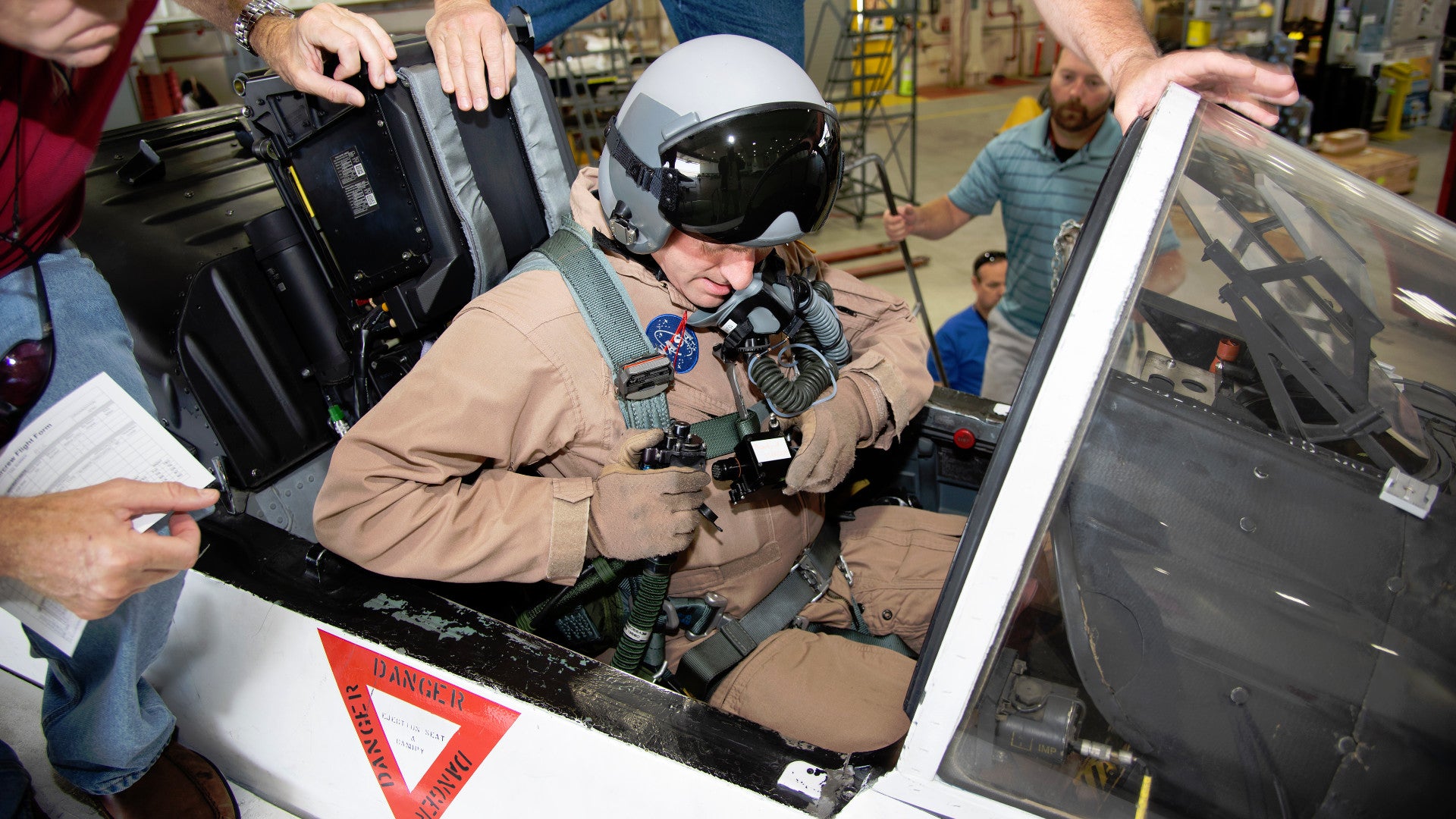As the U.S. Air Force and Navy struggle to find the sources of persistent reports of pilots not getting enough oxygen and suffering “hypoxia-like” symptoms when flying a variety of different aircraft, the National Aeronautics and Space Administration has recently kicked off a new program to help out. NASA pilots will fly various aircraft, including ex-U.S. military F/A-18A/B Hornet and F-15D Eagle jets, to gather important baseline information on how the human body responds to various flight conditions, especially when it comes to breathing.
The flight tests at the Armstrong Flight Research Center, situated within the Air Force’s Edwards Air Force Base in California, began on Aug. 3, 2018. The NASA Engineering and Safety Center (NESC) at the Langley Research Center in Virginia is managing the program. Five NASA pilots will fly a total of 160 hours performing various maneuvers, from routine flight through “benign environments” to complex and strenuous high-altitude aerobatics and combat-style maneuvering.
“As a retired Air Force fighter pilot, I understand the military mission and the environment in which our pilots need to operate,” NASA pilot Jim Less said in an interview for an official feature on the project. “It is my hope that the data we gather will increase our understanding of the physiology of flying high-performance fighters and will allow the military to resolve the problems they’ve been having with physiological events.”
A physiological event, or physiological episode, also known as a P.E., is how the U.S. military describes an incident where a pilot reports one or more serious symptoms, including severe headaches, blurred vision, confusion, disorientation, or even blacking out temporarily. These are often associated with hypoxia, or a lack of adequate oxygen to the brain, though there can be other contributing factors, as well.
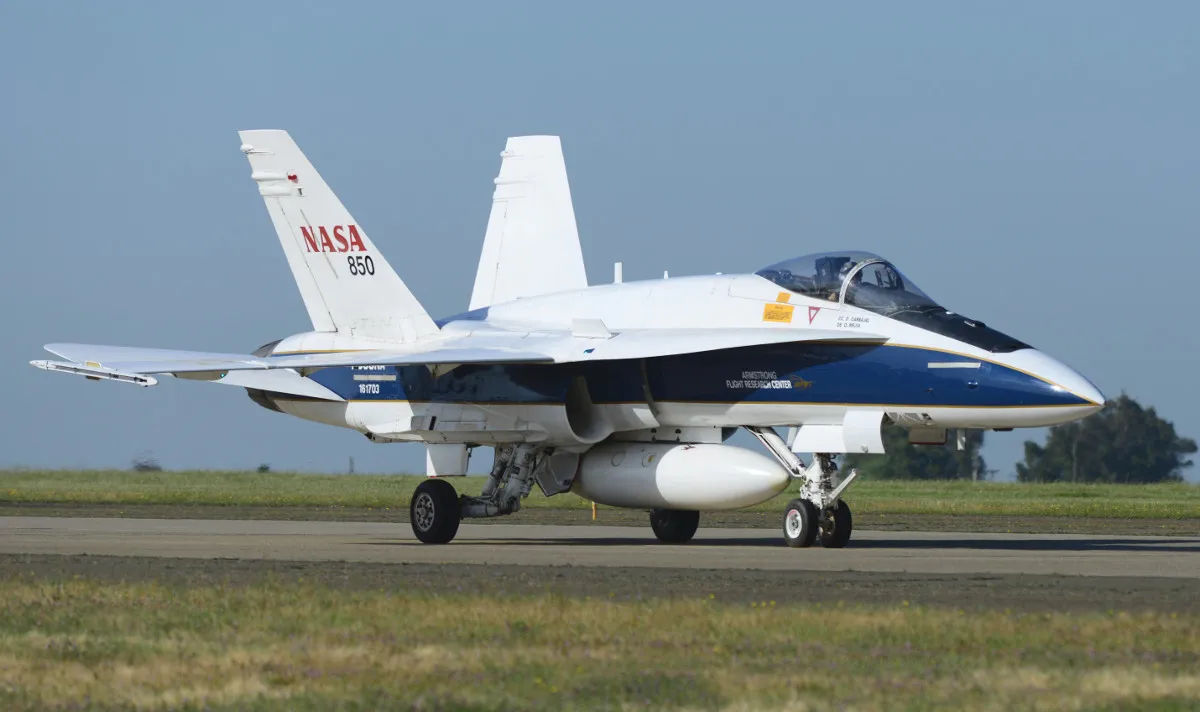
The pilots will wear a VigiLOX oxygen monitoring system, which defense contractor Cobham is supplying, in addition to their normal oxygen mask. This system is able to collect data about the pilot’s physiological condition, breathing, and the environmental condition in the cockpit and transmit it to personnel on the ground in real time.
The Air Force and Navy have focused much of their efforts in exploring the potential for faults in the onboard oxygen generation systems (OBOGS) that delivers air to pilots in most modern fighter jets, as well as other aircraft, including jet and turboprop trainers, such as the T-45 Goshawk and T-6 Texan II. Unfortunately, it has proven difficult to locate an obvious problem, or collection of problems, that would completely explain away even a majority of the reported instances of hypoxia-like symptoms across various aircraft types.
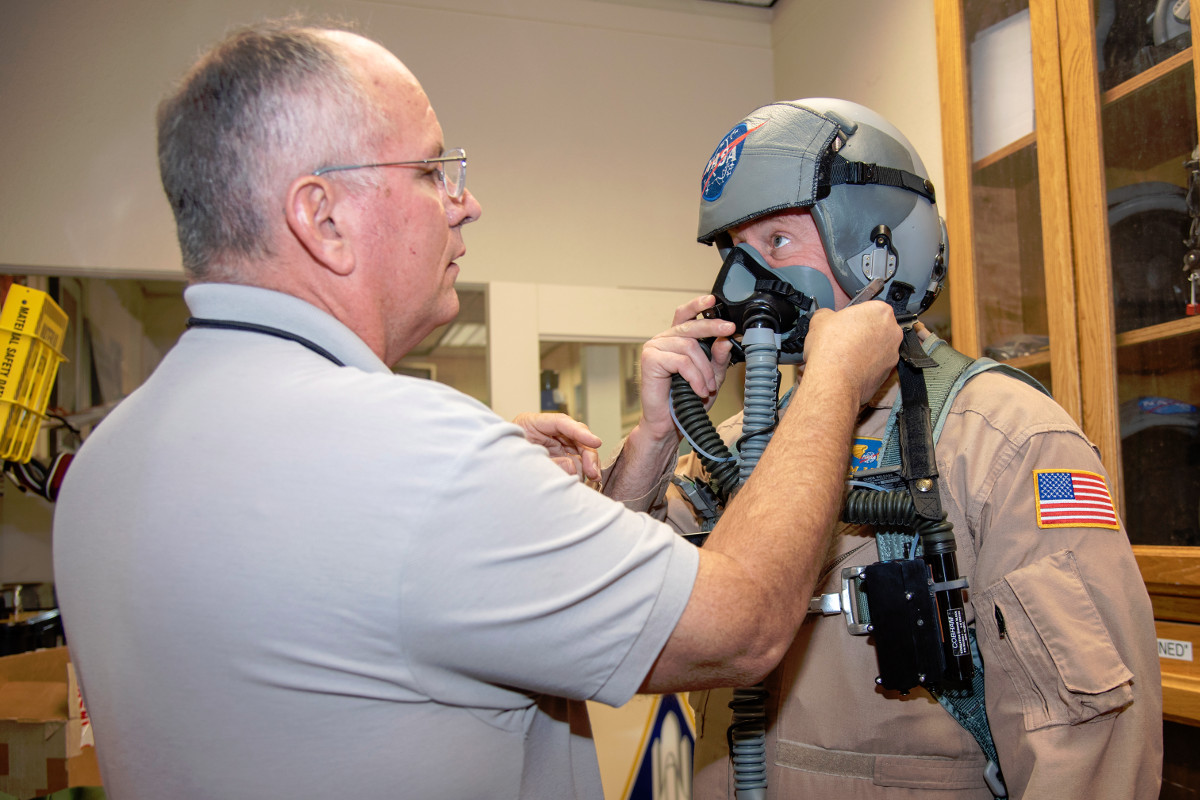
“It’s like chasing a ghost,” U.S. Navy Rear Adm. Mike “Nasty” Manazir, then-Deputy Chief of Naval Operations for Warfare Systems, explained to members of Congress in February 2016. “You can’t figure it out, because the monitoring devices that do this are not on the airplane.”
A career naval aviator, Manazir retired from the service in August 2017. He is now Vice President, Navy Systems, The Boeing Company, which manufactured the F/A-18 Hornet and continues to make the F/A-18E/F Super Hornet and EA-18G Growler, the latter two types being front and center in the crisis of reported hypoxia-like symptoms.
NASA doesn’t expect to identify any actual root causes that result in P.E.s, but instead hopes to offer a better overall understanding of how a human body is supposed to act in the cockpit of modern U.S. military fighter jets. The present program at the Armstrong Flight Research Center builds off NESC’s own experience of independently assessing a Navy study regarding reports of hypoxia-like symptoms in 2017.
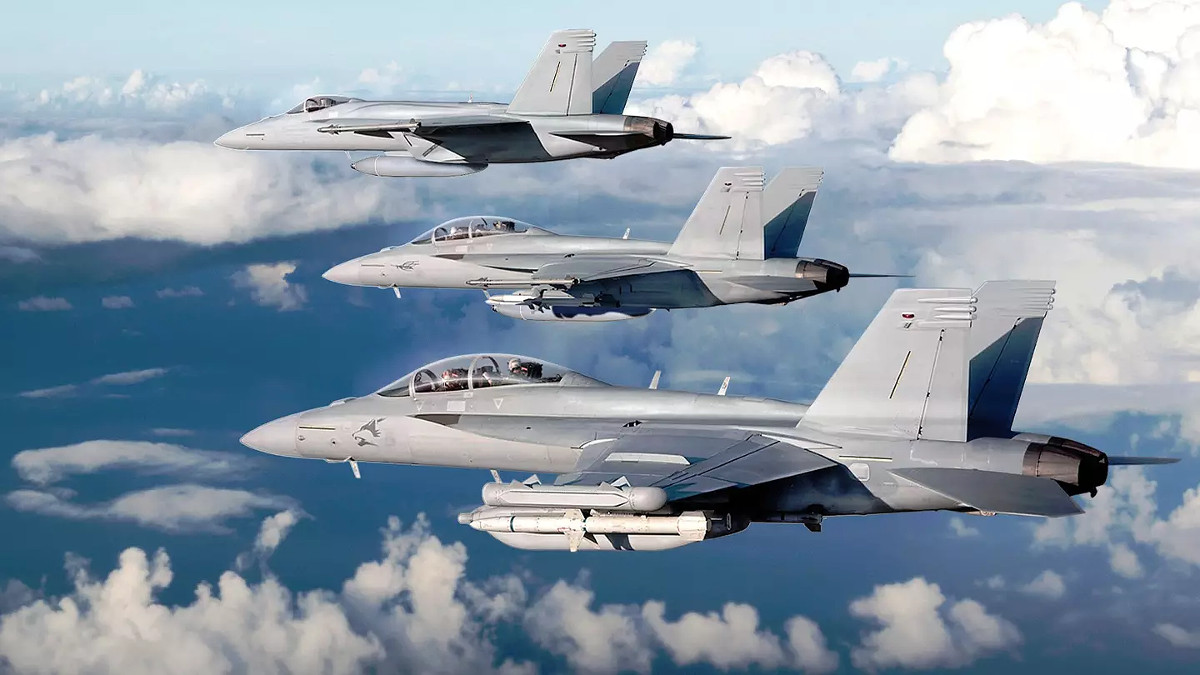
“We found that there has been very little investigation surrounding the human in the cockpit,” NESC principal engineer Clinton Cragg told members of Congress earlier in 2018. “We don’t have the amount of oxygen in his mask, the amount of CO2 [carbon dioxcide] in his mask, the pressure you’d want to know about in the cockpit, nor the pilot’s breathing rates. Those types of things are what could help us do a full physiological assessment of what’s happening to the pilot.”
NASA wouldn’t necessarily be able to help determine the actual cause of hypoxia-like episodes in current U.S. military aircraft if it wanted to anyway. Its F/A-18A/B and F-15D aircraft have liquid oxygen (LOX) systems versus the newer computer-controlled OBOGS found on more modern fighter jets, which produce their own oxygen in flight.
But NESC believes this will actually be a benefit in the testing, since NASA will be able to establish a baseline of what one could expect a pilot to have experienced in jets without OBOGS. Those aircraft have generally not seen the same spike in reported P.E.s in recent years and problems with LOX systems have proven easier to diagnose. As such, NASA’s information could also help the Air Force and the Navy further isolate possible sources of trouble in newer aircraft by eliminating potential factors also present in older planes where pilots have not complained about trouble breathing.

Any additional information NASA can provide will help to some degree. Despite years of attempts by the Air Force and Navy to identify and address the root causes, P.E.s remain a persistent and potentially deadly danger for pilots in a wide array of different aircraft types, including the – and that doesn’t look set to change any time soon.
In May 2018, an F/A-18E Super Hornet from the USS Harry S. Truman‘s air wing had to divert to Incirlik Air Base in Turkey after experiencing hypoxia-like symptoms during a mission over Syria. Earlier in August, Aviation Week reported that the Air Force’s T-6 trainer fleet was still averaging nearly 8 P.E.s every month since the planes returned to the skies in February 2018 after having been grounded over the issue.
This story came soon after Lieutenant General Steven Kwast, head of Air Education and Training Command, insisted the problem was months away from being solved for good in July 2018. The officer told Air Force Times that investigations had shown that pilots in the Texan IIs had experienced more fluctuation in the flow of oxygen during various situations than the Air Force had expected.
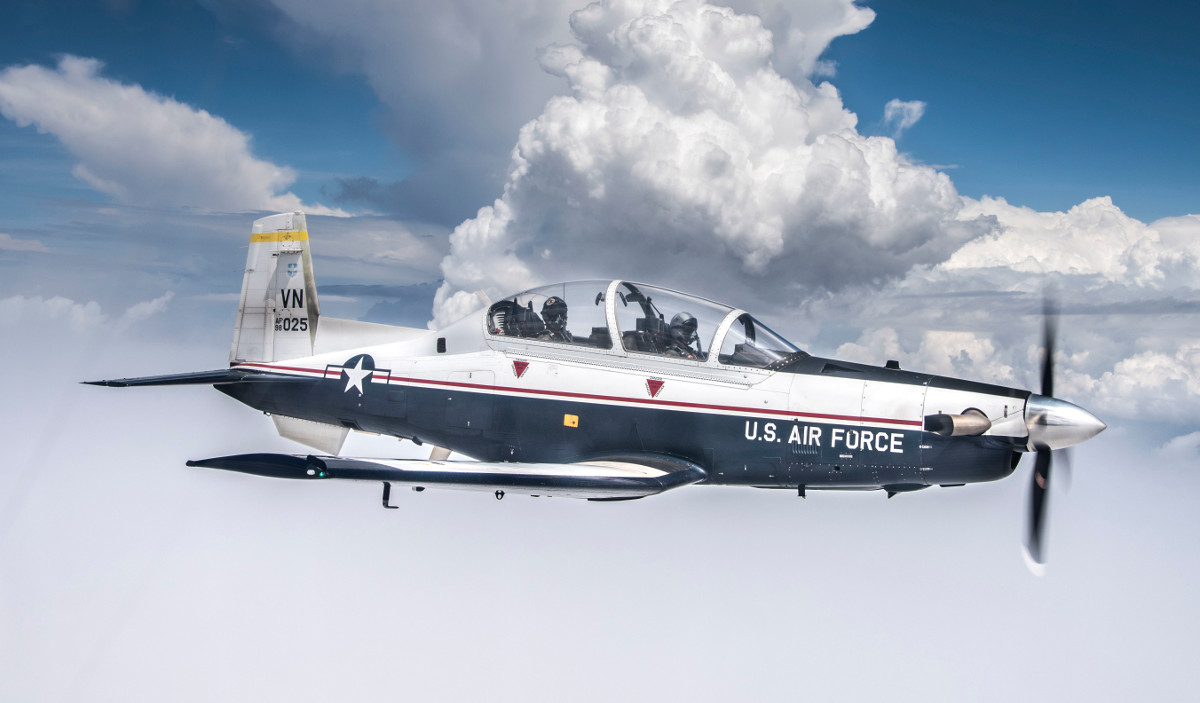
“So the question is, what does that do to the human body, when you have a fluctuation of oxygen?” Kwast said. “That’s the kind of work they’re doing as they discover something that is a little … different than what we thought. Because we’re measuring it with more precision; we do the work, the scientific method [to find out] ‘What does that mean?’”
This is exactly the sort of baseline information NASA is hoping to collect in its study. Hopefully, this new data will help the Air Force and the Navy to better understand the source or sources of these issues so they can solve them once and for all.
Contact the author: jtrevithickpr@gmail.com
